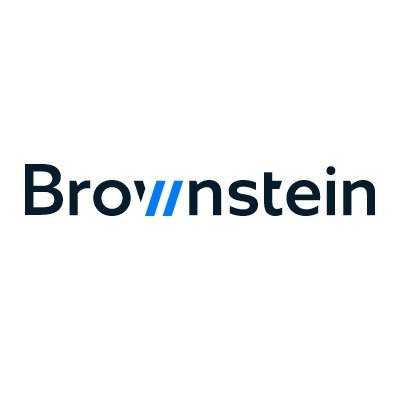Best Tax Increment Financing Lawyers in Santa Barbara
Share your needs with us, get contacted by law firms.
Free. Takes 2 min.
List of the best lawyers in Santa Barbara, United States
About Tax Increment Financing Law in Santa Barbara, United States
Tax Increment Financing (TIF) is a public financing method used to stimulate economic development in specific areas. In Santa Barbara, similar to other places in the United States, TIF is utilized as a tool to help projects that cannot otherwise attract sufficient private investment. A portion of future property tax revenues generated by the increase in property values due to redevelopment are allocated to invest back into the project or its surrounding infrastructure improvements. TIF aims to alleviate blight, promote community revitalization, and generate jobs without increasing existing taxes or introducing new ones.
Why You May Need a Lawyer
Engaging a lawyer specializing in Tax Increment Financing might be crucial for several reasons:
- Understanding the complex regulatory framework and compliance requirements associated with TIF.
- Negotiating with local government entities to structure a TIF agreement beneficial to all parties.
- Assisting in project feasibility analysis and assessing financial implications.
- Managing legal disputes or conflicts that arise during the implementation phase of a TIF project.
- Guiding you through local public hearing processes and community engagement.
Local Laws Overview
Santa Barbara, like other Californian municipalities, abides by the state’s legislative framework governing TIF, known as the California Redevelopment Law. Key aspects include:
- TIF projects must contribute to the elimination of urban blight.
- The increment levy is typically set for a specified period, often between 20 to 30 years.
- Funds can be used for public infrastructure improvements, affordable housing, and other community benefit projects.
- Compliance with environmental review processes as per the California Environmental Quality Act (CEQA).
- Engagement with Community Development Agencies (CDAs) and adherence to public sector fiscal policies.
Frequently Asked Questions
What is the primary goal of Tax Increment Financing?
The main goal of TIF is to stimulate revitalization in underdeveloped or blighted areas by leveraging anticipated future tax revenues for current improvements.
How does TIF funding work?
TIF funding works by capturing the increase in property tax revenues that result when property values rise due to development. This increment is then reinvested in the improvement area.
Are there any risks associated with TIF?
Yes, if property values do not increase as anticipated, there may not be enough increment revenue to cover the debt service on bonds issued for development projects.
Who oversees a TIF district in Santa Barbara?
TIF districts are typically overseen by local government agencies, including community development departments and redevelopment authorities.
Can TIF be used anywhere in Santa Barbara?
No, TIF is generally used in areas designated as "blighted" or "underdeveloped" according to specific legal criteria set by state and local laws.
Are TIF districts permanent?
No, TIF districts have a limited lifespan, often predetermined in their formation plan, usually ranging from 20 to 30 years.
Do TIF projects require community approval?
Yes, community involvement is a critical component, and public hearings are often required to gain community input and approval.
Is TIF funding considered a grant?
No, TIF is not a grant program. It's a method to allow municipalities to finance redevelopment without raising taxes.
Can individuals apply for TIF?
TIF is typically applied to larger development projects led by municipalities or larger private entities in partnership with public agencies.
How does TIF affect local schools' funding?
The impact on schools varies but often arrangements are made to offset any potential financial loss to school districts through negotiation processes.
Additional Resources
For more information on Tax Increment Financing in Santa Barbara, consider reaching out to the following entities:
- Santa Barbara County Economic Development Department
- California Redevelopment Association
- Local Community Development Agencies
- California State Treasurer’s Office
Next Steps
If you need legal assistance in understanding or engaging with Tax Increment Financing in Santa Barbara, consider consulting with attorneys who specialize in local government law and economic development. Schedule initial consultations to evaluate their experience and approach. It's also beneficial to gather any relevant documentation and clearly define your objectives so that your legal advisor can offer tailored guidance and representation.
Lawzana helps you find the best lawyers and law firms in Santa Barbara through a curated and pre-screened list of qualified legal professionals. Our platform offers rankings and detailed profiles of attorneys and law firms, allowing you to compare based on practice areas, including Tax Increment Financing, experience, and client feedback.
Each profile includes a description of the firm's areas of practice, client reviews, team members and partners, year of establishment, spoken languages, office locations, contact information, social media presence, and any published articles or resources. Most firms on our platform speak English and are experienced in both local and international legal matters.
Get a quote from top-rated law firms in Santa Barbara, United States — quickly, securely, and without unnecessary hassle.
Disclaimer:
The information provided on this page is for general informational purposes only and does not constitute legal advice. While we strive to ensure the accuracy and relevance of the content, legal information may change over time, and interpretations of the law can vary. You should always consult with a qualified legal professional for advice specific to your situation.
We disclaim all liability for actions taken or not taken based on the content of this page. If you believe any information is incorrect or outdated, please contact us, and we will review and update it where appropriate.








